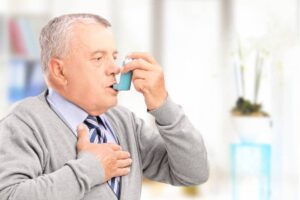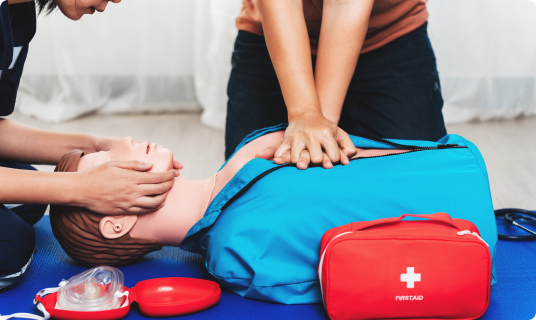Chapter 4: Breathing Emergencies
A breathing emergency is a serious medical condition where someone has trouble breathing—or can’t breathe at all. These situations can become life-threatening quickly and require immediate attention.

Causes of Breathing Emergencies
Breathing issues can be triggered by a wide range of problems, including:
- Allergic reactions
- Asthma
- Chest injuries or infections
- Choking
- Emotional stress, fear, or pain
- Inhaling fumes
- Heart attack or heart failure
- Lung problems like pneumonia or a collapsed lung
- Head, neck, or chest injuries
- Smoking
Signs and Symptoms
When someone is having a breathing emergency, you might notice:
- Very fast or very slow breathing
- Chest pain
- Coughing
- Noisy breathing (like wheezing or whistling)
- Pale or blue lips, fingers, or face
- Confusion or unusual behavior
- Shortness of breath or difficulty breathing
Example: Asthma
Asthma is a common cause of breathing emergencies, especially in people under 15. Most people with asthma are aware of their condition and often carry an inhaler.
Asthma attacks can be triggered by things like:
- Mold, plants, or pollen
- Smoke, dust, or pollution
- Perfume
- Pets, feathers, or carpets
- Medications
- Sudden changes in temperature
- Emotional stress
- Strenuous exercise
First Aid Actions
Make sure the scene is safe before helping
- Ask if the person has prescribed medication. If they can’t access it, get it for them
- Help them use an inhaler or epinephrine auto-injector (epi-pen) if needed
- Call 9-1-1 if they don’t have medicine or if their condition gets worse
- Loosen tight clothing, especially around the neck
- Stay calm and try to keep the person calm too
- Remain with them until emergency help arrives
- If they stop responding, begin Cardiopulmonary Resuscitation (CPR). If you’re not trained in full CPR, use Hands-Only CPR
This chapter in your Online First Aid Course prepares you to recognize and respond to breathing emergencies quickly and safely.

